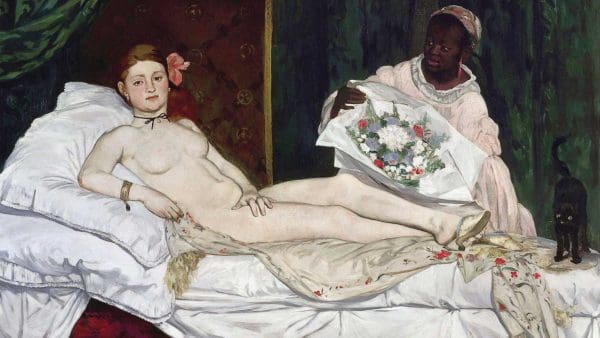
Bernadette Wegenstein, at the time a faculty member in the Department of Media Study at SUNY Buffalo, was fascinated, as were her students. The show seemed to strike a deep cultural nerve related to female looks and transformation.
“To me, what was interesting was, there was a desire behind this that must have been so strong for these women,” says Wegenstein, now director of the Center for Advanced Media Studies at Johns Hopkins and a research professor in the Department of German and Romance Languages and Literatures.
Wegenstein explored the history and psychology of women, their looks, and cosmetic changes, in a 2008 documentary Made Over in America (Icarus Films), with Geoffrey Alan Rhodes, and more recently in her book The Cosmetic Gaze: Body Modification and the Construction of Beauty, published by The MIT Press. While the film focused primarily on The Swan, the book takes a broader historical and theoretical look at “makeovers.”
“The commoditization of an act like going under the knife is linked with the consumption of the images and stories of magical transformations that the media economy slingshots at us.”
—Bernadette Wegenstein
Wegenstein defines the “cosmetic gaze” as a person’s critical assessment that desires improvement, and sees physical changes as wholly linked to self-identity. (Think of the person who says she feels more self-confident after getting a nose job.) “This gaze has generated a breakdown between the interiority and exteriority of the human body,” she writes.
Wegenstein shows that the perceived link between outer appearance and inner worth, applied to both self and others, dates at least to Plato, who wrote in one of his famous dialogues, “Isn’t what is most beautiful also most lovable?”
She traces this interior-exterior connection through philosophers and thinkers, including Swiss pastor and physiognomist Johann Kaspar Lavater (1741–1801), who wrote, “Beauty and ugliness have a strict connection with the moral constitution of Man.” And she connects it to the Nazi embrace of eugenics, which linked “Jewish” features such as dark hair and large noses to “impurities” that threatened the Aryan race.
To maintain the interior-exterior connection, “reality TV makeover culture connects a beautiful body with a beautiful soul and with a moral duty to reveal this connection,” she writes. In other words, women undergoing these procedures are meeting their obligation to match outer beauty with inner worth.
Even women who are ill with breast cancer, she says, feel pressure to improve their appearance through breast implants. “You always want to look healthy and fit,” says Wegenstein, who is exploring the topic in a research project that will include a documentary, tentatively titled The Cure: The History and Culture of Breast Cancer.
Yet, while women undergoing cosmetic surgery may believe they are erasing the divide between the way they feel and the way they look, the modifications are inherently deceptive, notes Wegenstein. Markers of youth, health, and fertility, such as taut skin and firm breasts, can now be created artificially, she notes.
In The Cosmetic Gaze, Wegenstein examines cases in which plastic surgery brings women (and sometimes men, including Michael Jackson) outside normal standards of attractiveness—such as French porn star Lolo Ferrari, who underwent 22 operations to create the world’s largest breasts, thus stepping “outside of the realm of the reproductive and sexual.”
But the struggles of ordinary women to fit in and feel attractive are at the heart of her book, which notes that women who watch cosmetic surgery makeover shows become increasingly unhappy with their own looks. One interview she found particularly compelling, she said, was with “Susan,” a Newport Beach, Calif., housewife of about 40 who said her goal with plastic surgery was not to create a new look but to emerge “subtly refreshed.”
Wegenstein notes: “These body modifications are all about giving the impression of always being ready to be reborn as a new person, a better person. It’s really a look that says, ‘I have a lot of potential, my life’s not over.’”
Wegenstein believes that the desire to modify creates a new standard of beauty that must then be met and exceeded, in a continuing cycle that requires continuous assessments of perceived physical flaws, and ongoing financial, emotional, and time investments to change them. “The commoditization of an act like going under the knife is linked with the consumption of the images and stories of magical transformations that the media economy slingshots at us,” she writes.
She finds it disturbing that the prevailing standard of beauty, as shown in body-makeover shows, leaves little room for individuality. “I think it is really bothersome that we’re trying to all look the same,” she says.
Yet Wegenstein said she does not judge women who choose to have plastic surgery or make other physical improvements. “My personal threshold for when it’s too much is very open,” she says.




